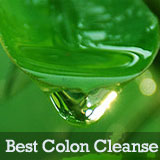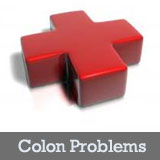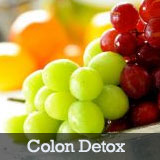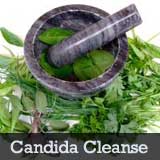Candida Albicans Disease
Candida Albicans disease is a condition resulting from the overgrowth of yeast that inhabits your intestinal tract, mouth, skin and reproductive areas.
Normal amounts of this simple fungus are naturally recurrent in humans.
However, certain conditions like a weakened immune system, use of antibiotics or birth control, illness, pregnancy and stress can kill the healthy bacteria that help control the levels of yeast in your body.
This causes the microorganisms to multiply rapidly in your body, resulting in a range of uncomfortable symptoms known collectively as Candida, or Candida Albicans disease.
There are several recurring signs of Candida, including skin rash, weight gain, yeast infection, constipation, headaches, fatigue, and a kind of mouth infection called oral thrush.
One of the most familiar problems of Candida overgrowth is vaginal yeast infection. It can develop in women at any age, but occurs more often in those who are pregnant or diabetic.
Too much yeast can also cause penile infections in men, and anal infections in men and women. Rare but severe cases of female and male infertility have also happened due to Candida-related infections.
What Is Candida albicans?
The Candida albicans disease is the most common of the Candida species of yeast, and it is responsible for the majority of yeast infections today.
Although these infections, called Candidiasis, can cause a number of unpleasant symptoms, they are usually treatable with natural remedies or over-the-counter medicine.
But in some cases, Candidiasis can develop into a chronic condition or a potentially deadly disease called Candidemia.
How Is This Different?
Since Candidemia can be life-threatening, it is considered much more severe than a regular Candida yeast infection.
It develops when the Candida albicans organism enters your bloodstream, spreads throughout your body, and disrupts the normal functions of your circulatory, respiratory, gastrointestinal, or nervous systems.
If you have cancer, AIDS, and/or a compromised immune system, you have an increased risk for fatal complications caused by Candidemia.
What To Do About Candida Overgrowth
Typical Candida symptoms like rashes, bloating and yeast infections can be painful, uncomfortable and sometimes embarrassing. Thankfully, you have a variety of treatment options available to cure the many signs of yeast overgrowth.
Herbal remedies are an affordable and safe way to help treat Candida. Grapefruit seed extract inhibits the growth of fungus by increasing your body’s acidity.
Garlic works by cleansing your system of overabundant yeast colonies and boosting your immune system.
You can also fortify these herbs with probiotics that increases the amount of healthy bacteria in your body. These fungus-fighters are found naturally in yogurt or sold as supplements in health food stores.
Another effective at-home remedy is to cleanse your body of excess yeast through a Candida-free diet. This process involves the elimination of foods that contain yeast or encourage its growth, like sugar, junk food, molds and preservatives.
For a successful detox, you must avoid consuming foods such as white and wheat breads, vinegar-based products, fruit juice, soda, processed and canned foods, and all alcohol.
Although these guidelines may seem strict, there a number of satisfying and healthy foods you can enjoy on your Candida-free diet.
Fresh vegetables, whole grains, fish, poultry and beef, can all be used in a number of yeast-free recipes. A diet free of Candida is also helpful for maintaining healthy colon function.
Another way you can combat Candida is by preventing yeast overgrowth before it starts. A spit test is an easy way to help determine early signs of a yeast imbalance in your system.
To do this, spit in a clean glass of water immediately after you wake up in the morning. Check the glass every 15 minutes for the next hour.
A clean glass indicates your yeast levels are under control, while a series of string-like particles attached to cloudy saliva can indicate a potential yeast problem!
How to Cure Candida Albicans
So how does one go about treating Candida Albicans? I'm sure it can get confusing by reading all of the above remedies.
There are many ways to cure Candida Albicans, and the things that get recommended over and over again are over-the-counter medications such as creams and pills.
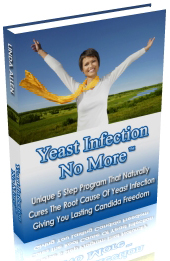 These might work for you, or they might not. The thing about them is that they do not cure the underlying cause, so in most cases the anal yeast infection will keep coming back.
These might work for you, or they might not. The thing about them is that they do not cure the underlying cause, so in most cases the anal yeast infection will keep coming back.
If you're worried, then by all means go and see your doctor or natural health practitioner.
If you're like me, you'd rather find someone who has done it before and has a proven track record of successfully getting rid of Candida forever with a natural Candida cleanse.
The product that I recommend is called Yeast Infection No More. I have tested their product and support and it is excellent, I usually get a friendly reply within a few hours.
It is a refreshing change from all of those companies that are trying to sell you their product and if you have a question their support is nowhere to be found! But these guys were different, so I liked that.
They also offer an 8-week 100% money back guarantee, so you get your money back if it doesn't work or if you don't like it.
If you want more information, visit their website.
Recommended
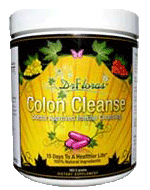
I recommend the DrFloras colon cleanser if you want to cleanse your colon safely, effectively, and without spending a fortune.





